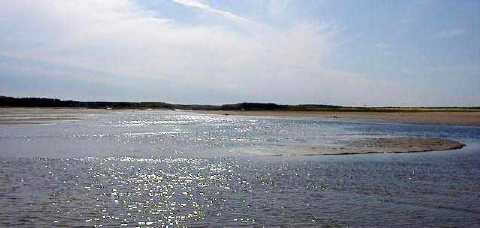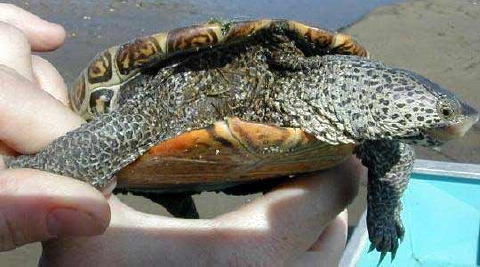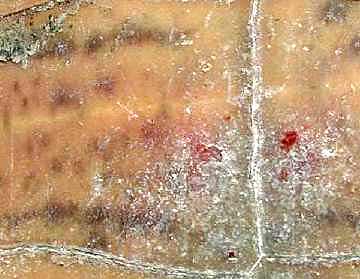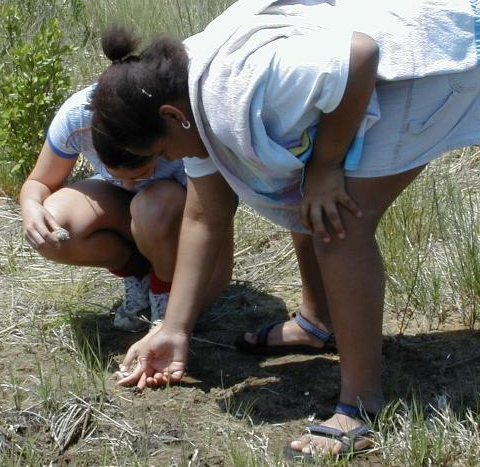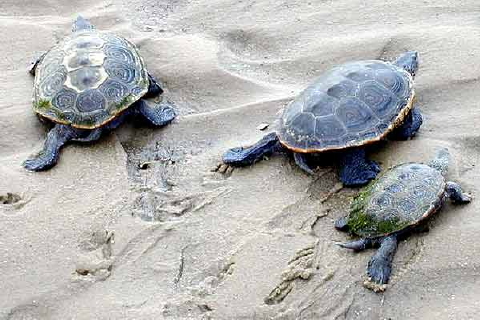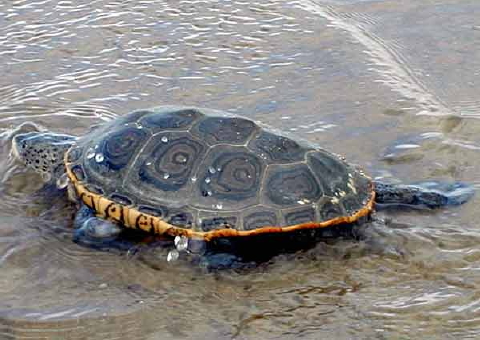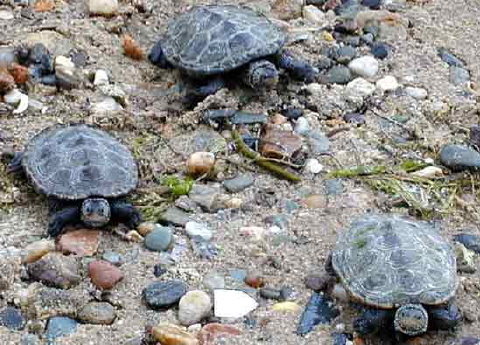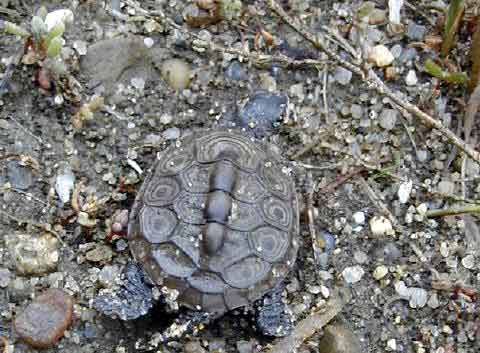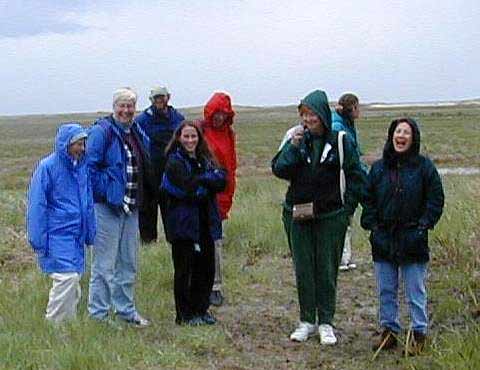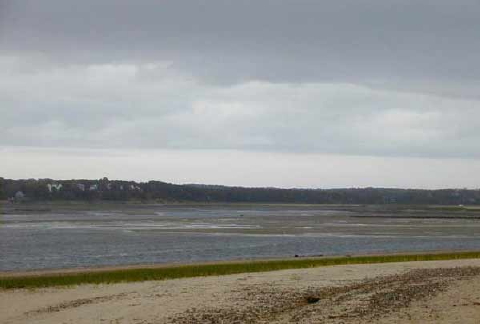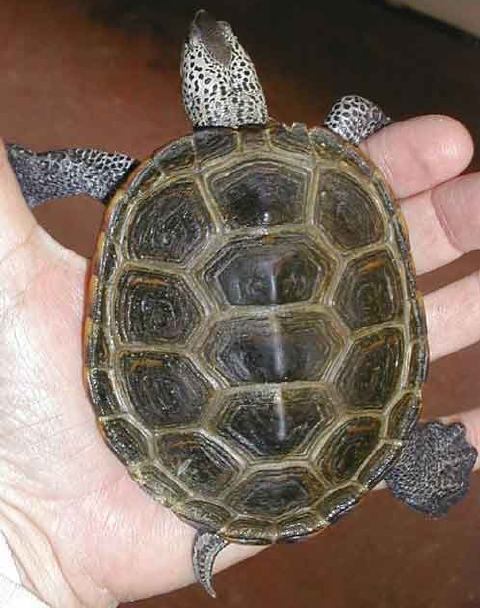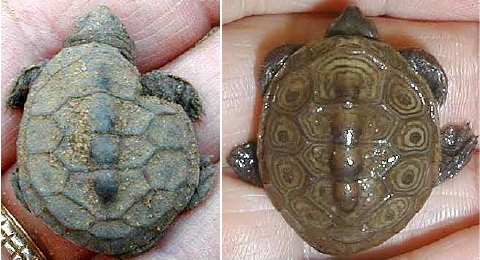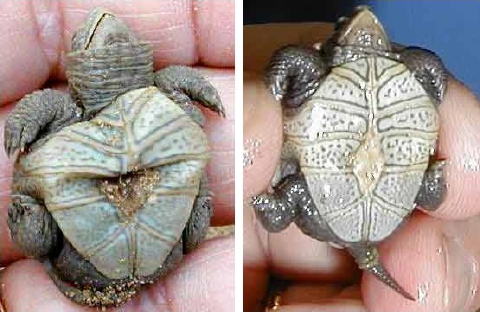Blackfish Creek Rip at Low Tide
A break in the weather graced the morning with warming sunshine and a refreshing southeasterly breeze. Water temperatures reached 60 degrees — again. And terrapins, which had already awoken once from brumation, have dug out of a second time following a mid-May sleep-in. While still not moving in large numbers, turtles have resumed their semi-diurnal tidal parade through Blackfish Creek.Â
 Female Terrapin Caked in Brumation Ooze
Four terrapins were netted coming through the rip, two males and two females, all of whose cavities were caked in mud indicating recent emergence. Passing through the rapids twice daily cleanses our turtles quicker than a front-loading, tumbler washing machine. Two of today’s terrapins, the males, had been seen earlier this year, one on May 1st and the other on May 3rd. The two females were first-time captures.
Female Terrapin $1074 Shows Blood Beneath Plastron
A disturbing observation was made on the plastron of female #1074, and to a lesser degree of male #1056, too. There was a bright redness visible beneath the plastron scutes, which looked like bleeding. [Editor’s note from March 2010: After more than a decade of observations, this sub-plastron bleeding is noted in mature female diamondback terrapins in mating aggregations before nesting.]
 Male Terrapin #1056 Algae Gain Since May 3rd
Terrapin 1056 also showed how quickly these turtles can build up algae growth. You’d hardly believe it was the same critter when you compare the 3 May photo on the left with today’s view. On the other hand, chilly temperatures have probably kept him fairly inert the last couple of weeks.
Albany Visitors Release Terrapin Hatchling in Nursery Marsh
Finally, Memorial Weekend signals the return of summer volunteers to our Paludal Posse. One couple stopped me on the causeway as they arrived from the mainland. “How did our turtles do?â€Â These folks had found a terrapin laying a too shallow nest in their driveway last 29 June. The eggs were relocated to a protected site. “I guess no one will ever know?†they shrugged in disappointment. Not so — I gave them baby pictures of their hatchlings as they emerged in late September.
Another refugee family from urban Albany called this morning with a surprise. Two teenage guests found a hatchling in the wrack just outside their cottage — a prime nesting area on Lieutenant Island. This baby was just 2.65 centimeters long and tipped the scales at 5 grams. She had fully absorbed her yolk sac, and unlike the hatchlings found last week, she was not dehydrated. Perhaps this long string of rainy days did some good after all. Following a quick assessment of her health, this tiny dynamo was released back into the marsh by her finders — the newest volunteers in Wellfleet Bay’s Paludal Posse.
